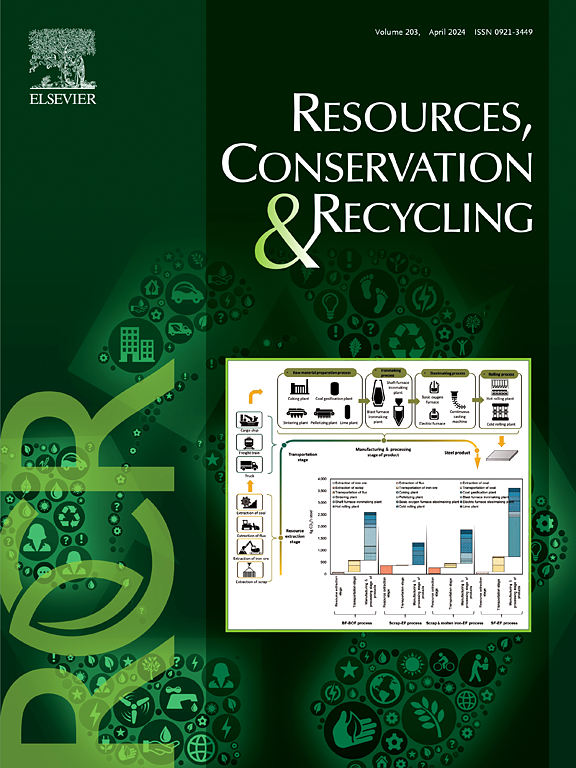Mechanistic insights into gold (Au) recovery and biosynthesis pathway in a hydrogen (H2)-based denitrifying membrane biofilm
IF 11.2
1区 环境科学与生态学
Q1 ENGINEERING, ENVIRONMENTAL
引用次数: 0
Abstract
Gold (Au) holds a high market value due to its extensive industry, medicine, and jewelry applications. Extracting Au from wastewater streams presents an opportunity to bolster the supply of this precious metal. This study explores a novel application of the H2-based Membrane Biofilm Reactor (MBfR): reducing Au(III) to recover Au(0) nanoparticles (Au°NPs) by a denitrifying biofilm. During long-term operation, >90 % of the soluble Au(III) was reduced to Au°NPs through enzymatic processes. Au(III) recovery was primarily conducted by denitrifiers such as Stenotrophomonas, Pannonibacter, and Thermomonas. Most Au°NPs were retained within the biofilm matrix, while some Au°NPs were released into the liquid. Continued biofilm activity with higher concentrations of influent Au(III) resulted in increasingly larger Au°NPs, eventually leading to the formation of high-purity Au(0) foil. This study demonstrates microbially driven Au(0) recovery in MBfR in which the reduction of Au(III) was linked to a core set of denitrifying genera and their genes encoding nitrate and metal reductases.
氢(H2)基反硝化膜生物膜中金(Au)回收和生物合成途径的机理研究
金(Au)由于其广泛的工业、医药和珠宝应用而具有很高的市场价值。从废水流中提取金提供了一个增加这种贵金属供应的机会。本研究探索了h2基膜生物膜反应器(MBfR)的新应用:通过反硝化生物膜还原Au(III)以回收Au(0)纳米颗粒(Au°NPs)。在长期操作过程中,90%的可溶性Au(III)通过酶解过程被还原为Au°NPs。Au(III)的回收主要由反硝化菌如窄养单胞菌、Pannonibacter和thermoonas进行。大部分Au°NPs被保留在生物膜基质中,而一些Au°NPs被释放到液体中。随着流入的Au(III)浓度的增加,生物膜的活性持续增强,导致Au°NPs越来越大,最终导致高纯度Au(III)箔的形成。本研究证明了微生物驱动的MBfR中Au(0)的回收,其中Au(III)的还原与一组核心反硝化属及其编码硝酸盐和金属还原酶的基因有关。
本文章由计算机程序翻译,如有差异,请以英文原文为准。
求助全文
约1分钟内获得全文
求助全文
来源期刊

Resources Conservation and Recycling
环境科学-工程:环境
CiteScore
22.90
自引率
6.10%
发文量
625
审稿时长
23 days
期刊介绍:
The journal Resources, Conservation & Recycling welcomes contributions from research, which consider sustainable management and conservation of resources. The journal prioritizes understanding the transformation processes crucial for transitioning toward more sustainable production and consumption systems. It highlights technological, economic, institutional, and policy aspects related to specific resource management practices such as conservation, recycling, and resource substitution, as well as broader strategies like improving resource productivity and restructuring production and consumption patterns.
Contributions may address regional, national, or international scales and can range from individual resources or technologies to entire sectors or systems. Authors are encouraged to explore scientific and methodological issues alongside practical, environmental, and economic implications. However, manuscripts focusing solely on laboratory experiments without discussing their broader implications will not be considered for publication in the journal.
 求助内容:
求助内容: 应助结果提醒方式:
应助结果提醒方式:


